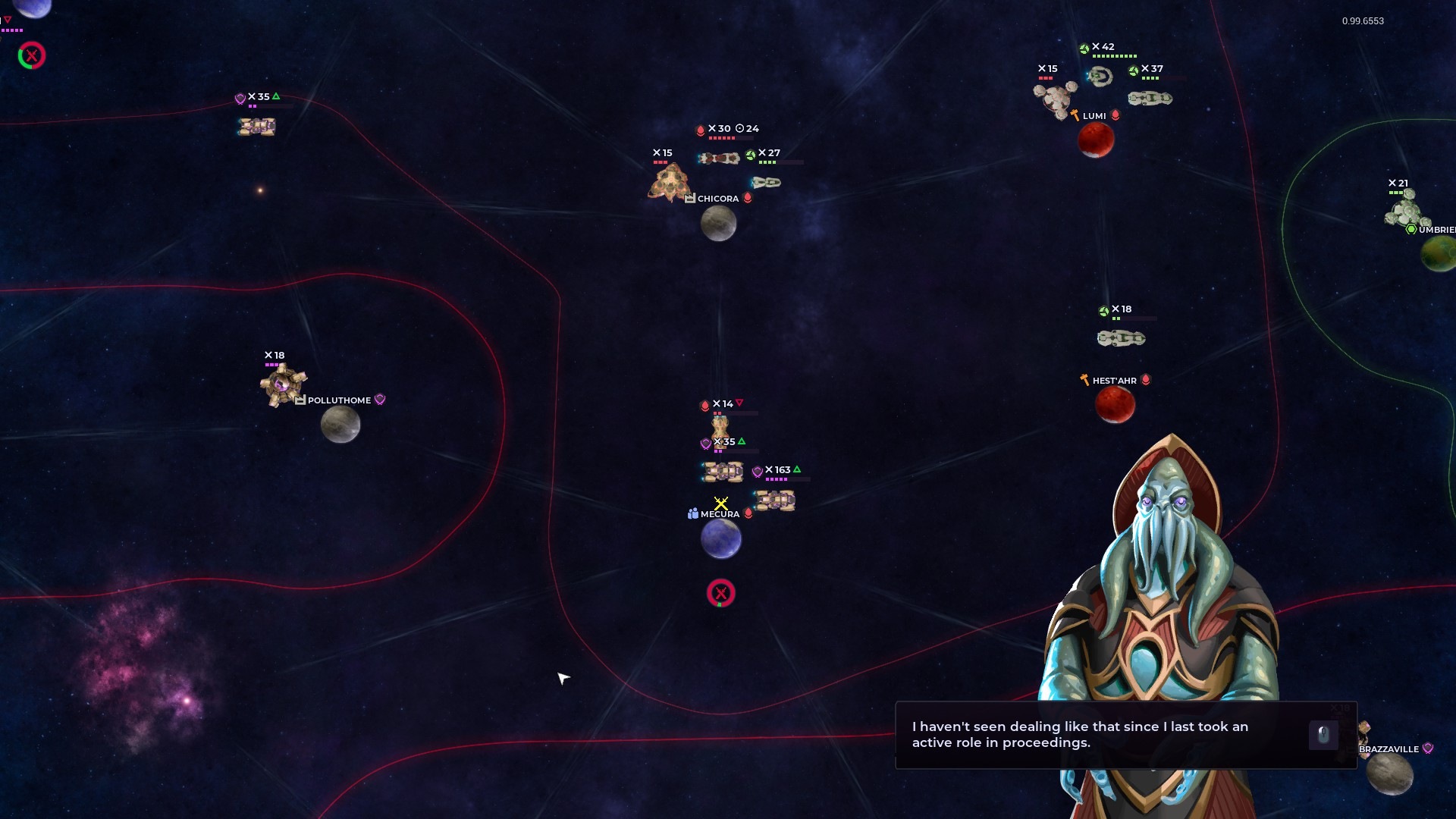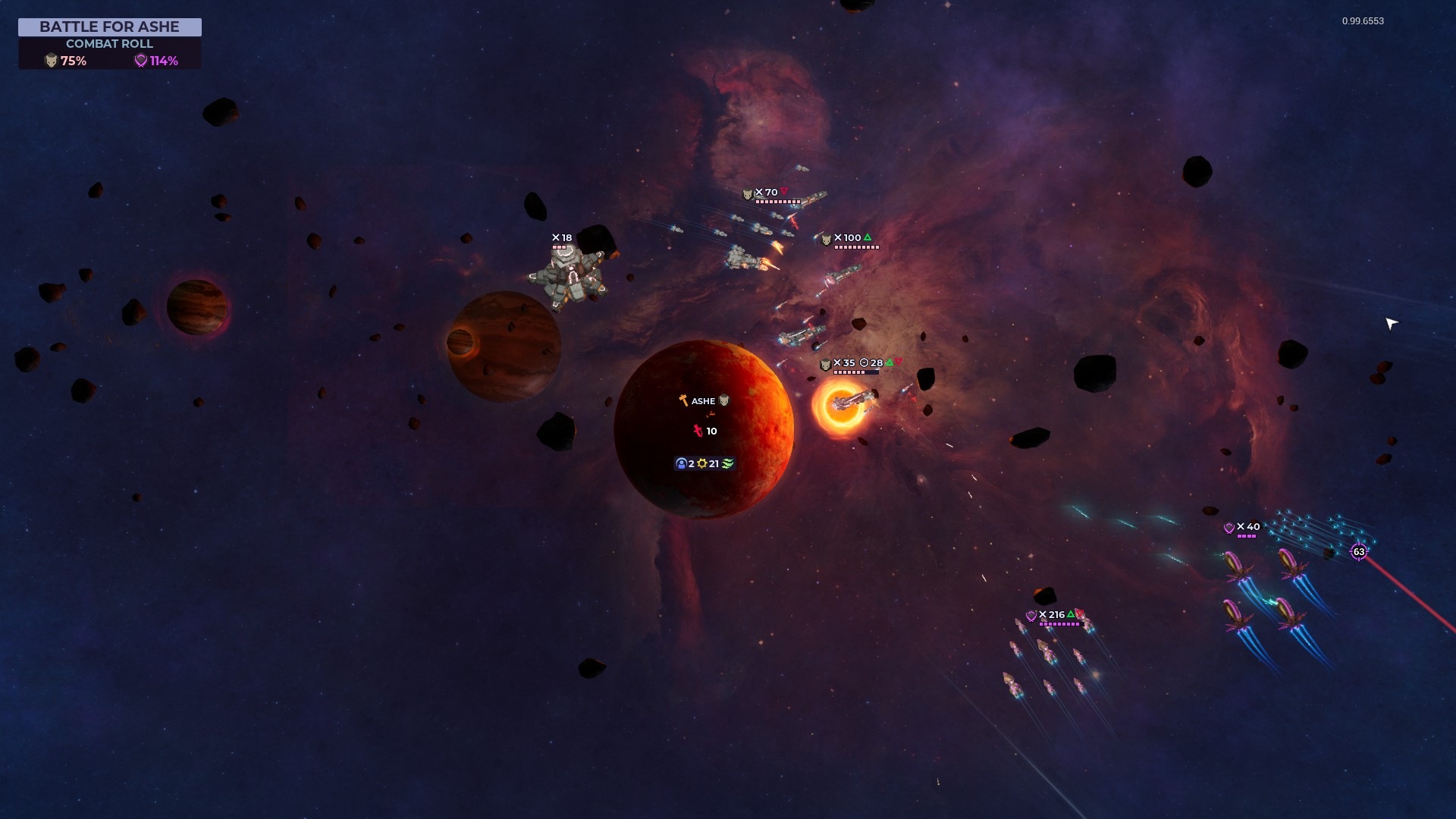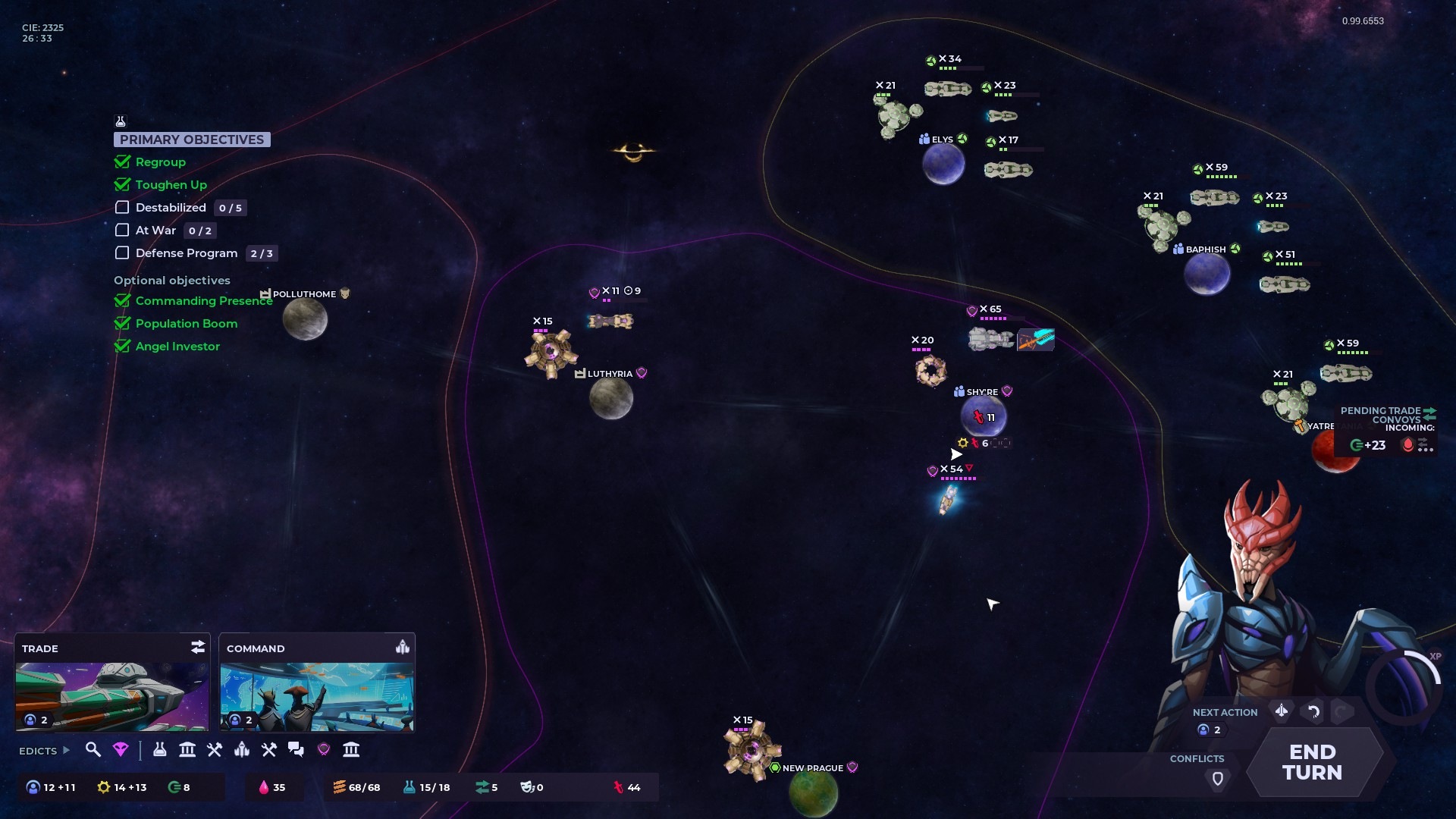Our Verdict
Nexus 5X is a fun, breezy, and surprisingly nuanced spin on Stellaris that's perfect for an evening's gaming session with friends.
For as much as I love my big, ambitious strategy games, I run into the same problem every time I think about starting up a fresh save: the time investment. Having a limited number of hours to devote to recreational play, I know I’ll have to set an entire Saturday aside if I really want to dig into Total War: Warhammer 3 or Crusader Kings 3 beyond the opening few turns or decades. Nexus 5X arrives as the solution to this problem, offering a pared-down, faster-paced version of the 4X experience that nonetheless preserves a lot of the flavor and variety you can get from its full-fat ancestor, Stellaris.
Here’s the pitch: Nexus 5X is kind of the beefed-up, Stellaris version of Neptune’s Pride, a browser-based multiplayer 4X game about conquering the galaxy (and all your friends or coworkers). Now, while Neptune’s Pride takes weeks or months to play, since everyone logs in once a day or so to make their moves, Nexus 5X boils that all down into focused rounds that take “about an hour.” You build ships, conquer planets, research tech, and try to outmaneuver your opponents in your quest for galactic dominance in the Stellaris universe.
Starting at the extremely stripped-down basics of Neptune’s Pride, Nexus 5X (and yes, this is also the name of the Google-branded phone that came out in 2015 before being replaced by the Pixel the following year) brings some of Stellaris’ complexity with its eleven unique factions. These aren’t as fanciful as what you may be accustomed to in Stellaris, but I think that works out in Nexus 5X’s favor – when you encounter the Kel-Azaan, for example, you’ll know that player has to take an aggressive approach, and that their fleets become more powerful with each battle they survive. A Chinoor player, on the other hand, will be unlikely to attack outright, since they’ll be focused on establishing trade deals and eventually engineering planet-scale corporate buyouts.
Each faction has three leaders to choose from as well, one that’s usable right away and two that you can unlock using tokens earned through play. These can also have a profound impact on your approach: the Voor Technocracy is always highly focused on technology, but starting leader Vex Kai’Fa earns an experience bonus from research, while Sapra Vun gains a bonus by sharing techs with other cultures through diplomacy.
So while Nexus 5X’s factions don’t quite have the sci-fi fantasy specificity of Stellaris (where you can play as a repugnant fungoid species led by military junta that just wants to be everyone’s friends), its selection is diverse enough to allow for completely different approaches, and distinct enough for each player to have clearly defined goals (and rivals) at the outset of each game.
I’ve been pleasantly surprised by how much Stellaris that Nexus 5X packs into each round I’ve played. That’s thanks in no small part to edicts, which in Nexus 5X work effectively like a deck of faction-specific cards drawn at the start of each turn. As my leaders gained experience, I got to pick new, increasingly powerful edicts to add to my deck, including game-changing ultimates that allowed me max out a fleet, takeover a planet, or place giant Dyson-scale crystalline objects in orbit around a system of my choice. There’s plenty to do each turn, from sending scientific expeditions to chart mysterious anomalies to activating spy networks, and it’s typically only limited by the amount of support generated by your faction’s planetary holdings. Each move costs an increasing amount of support, and finding ways to increase support (or get around the requirement) adds another interesting strategic layer to the game.
Ship combat is another example of Nexus 5X’s breezy but thoughtful approach to making a simplified Stellaris experience. Raw numbers generally trump everything else, but combat vessels fall into three classes (raiders, capitals, and carriers) that form a rock-paper-scissors triad. Carriers can send fighters to an adjacent system to harass and deplete enemy forces, and each faction also has several kinds of unlockable ships that each has its own unique abilities.
My complaints are relatively minor. Nexus 5X doesn’t do a terrific job of explaining some of its key elements, even in the eight-mission single-player campaign, which functions as an advanced tutorial and introduction to several factions. It’s occasionally difficult to find essential info quickly – I had to “lock” flyout windows in place with the middle mouse button so I could hover over UI elements for buildings on planets or fleet abilities. In general, the interface is attractive and minimalist, so it was jarring when I found myself wrestling with it to figure out a new mechanic or currency.
Overall, I’ve been impressed with the amount of nuance Whatboy Games has preserved in this much faster and arguably more casual Stellaris experience. Nexus 5X is perfect for an evening session, especially one with a group of friends over a Discord call. For anyone looking for a more complex and long-term strategy game, well, Stellaris isn’t going anywhere.

 2 weeks ago
60
2 weeks ago
60










